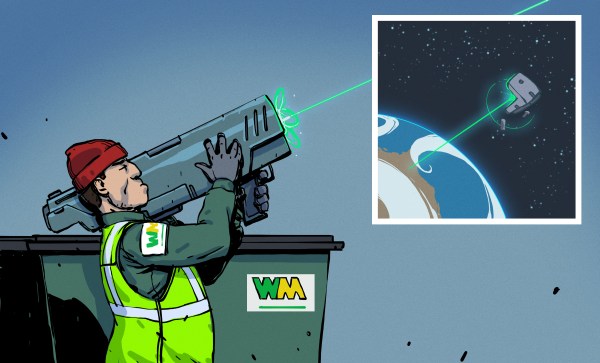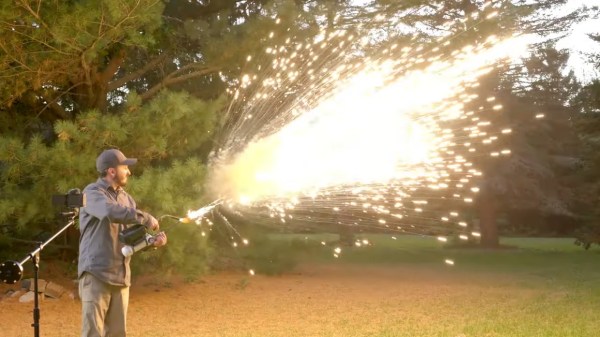Space, as the name suggests, is mostly empty. However, since the first satellite launch in 1957, mankind began to populate the Earth orbit with all kinds of spacecraft. On the downside, space also became more and more cluttered with trash from defunct or broken up rocket stages and satellites. Moving at speeds of nearly 30,000 km/h, even the tiniest object can pierce a hole through your spacecraft. Therefore, space junk poses a real threat for both manned and unmanned spacecraft and that is why space agencies are increasing their efforts into tracking, avoiding, and getting rid of it.
Continue reading “Getting Rid Of All The Space Junk In Earth’s Backyard”
Day: October 15, 2020
Air Cannon Serves Up A Blast Of Ferrocerium Sparks
OK, looks like we have a new way to entertain the kids and wreak havoc in the neighborhood, if this spark-shooting ferrocerium cannon is as easy to build as it looks.
This one comes to us by well-known purveyor of eyebrow-singing projects [NightHawkInLight], whose propane torch never seems to get a break. The idea here is a large scale version of an apparently popular trick where the “flints” from lighters, which are actually rods of ferrocerium, an aptly named alloy of iron and cerium, are heated to a nearly molten state and dropped onto a hard surface. The molten alloy thence explodes in a shower of sparks, to the mirth and merriment of those in attendance.
[NightHawkInLight]’s version of the trick scales everything up. Rather than lighter flints, he uses ferrocerium rods from firestarters of the type used for camping. The rod is stuffed into a barrel formed from steel brake line which is connected to the output of a PVC air chamber. His ominpresent propane torch is attached in such a way as the flame plays upon the loaded pyrophoric plug, heating it to a molten state before the air is released from the chamber. The massive display of sparks seen in the video below is pretty impressive, but we’re getting tired of gender reveal parties and forest fires. We just hope he had fire extinguishers on hand.
Seriously, be careful with stuff like this. [NightHawkInLight] has a lot of experience working with these kinds of projects, from his plasma-propelled soda bottles to making synthetic rubies with an arc welder. We’re sure he wouldn’t want to see anyone get hurt.
Continue reading “Air Cannon Serves Up A Blast Of Ferrocerium Sparks”
A Smart Speaker That Reminds You It’s Listening
[markw2k9] has an Alexa device that sits in his kitchen and decided it was time to spruce it up with some rather uncanny eyes. With some inspiration from the Adafruit Uncanny Eyes project, which displays similar animated eyes, [markw2k9] designed a 3d printed shell that goes on top of a 2nd generation Amazon Echo. A teensy 3.2 powers two OLED displays and monitors the light ring to know when to turn the lights on and show that your smart speaker is listening. The eyes look around in a shifty sort of manner. Light from the echo’s LED ring is diffused through a piece of plexiglass that was lightly sanded on the outside ring and the eye lenses are 30mm cabochons (a glass lens often used for jewelry).
One hiccup is that the ring on the Echo will glow in a steady pattern when there’s a notification. As this would cause the OLEDs to be on almost continuously and concerned for the lifetime of the OLED panels, the decision was made to detect this condition in the state machine and go into a timeout state. With that issue solved, the whole thing came together nicely. Where this project really shines is the design and execution. The case is sleek PLA and the whole thing looks professional.
We’ve seen a few other projects inspired by the animated eyes project such as this Halloween themed robot that is honestly quite terrifying. The software and STL files for the smart speaker’s eyes are on Github and Thingiverse.
Continue reading “A Smart Speaker That Reminds You It’s Listening”













